Anahtar Kelimeler:LLM-JEPA, Apple Manzano, MediaTek Dimensity 9500, GPT-5, DeepSeek-V3.1-Terminus, Qwen3-Omni, Baidu Qianfan-VL, gömülü alan eğitim çerçevesi, hibrit görsel tokenizer, çift NPU mimarisi, SWE-BENCH PRO kıyaslama testi, çok modlu ses girişi
🔥 Focus
LLM-JEPA: New Breakthrough in Language Model Training Framework : Yann LeCun et al. introduced LLM-JEPA, the first JEPA-style language model training framework that combines visual domain embedding space objectives with natural language processing generation objectives. This framework surpassed standard LLM objectives in multiple benchmarks such as NL-RX, GSM8K, and Spider, performed well on models like Llama3 and OpenELM, demonstrated greater robustness to overfitting, and was effective in both pre-training and fine-tuning, signaling that embedding space training could be the next major leap for LLMs. (Source: ylecun, ylecun)
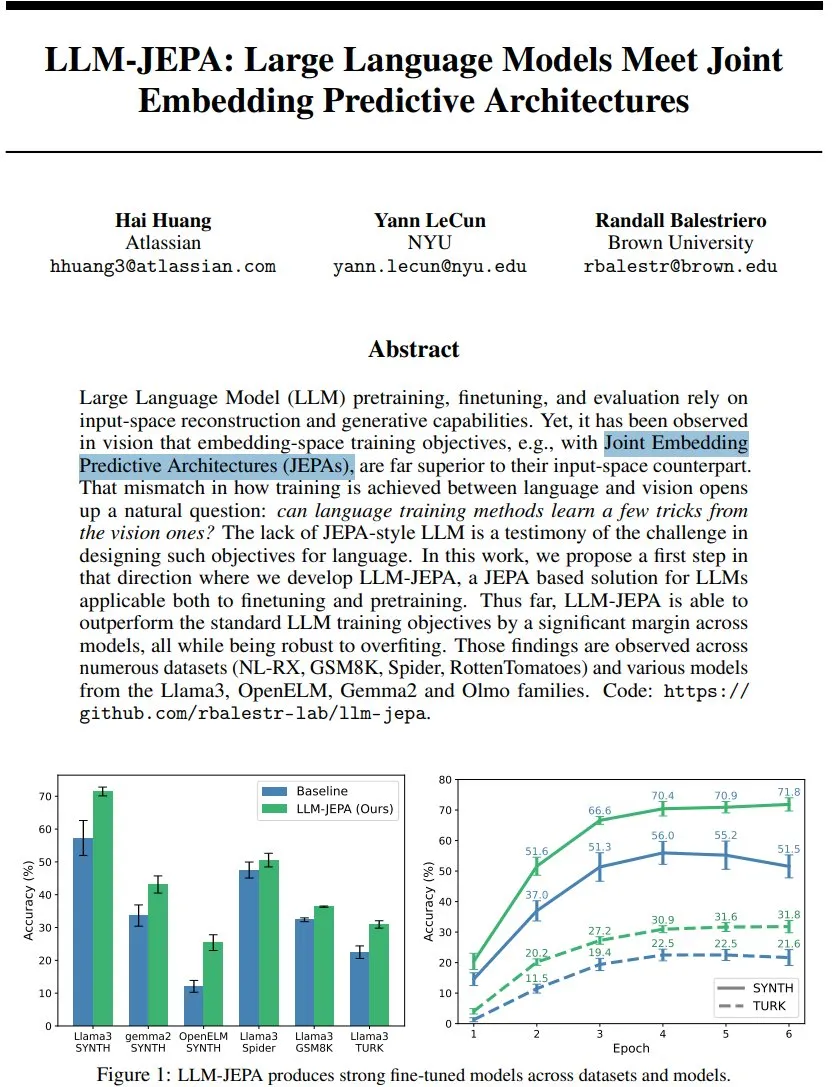
Apple Manzano: A Simple and Scalable Solution for Unified Multimodal LLMs : Apple released Manzano, a simple and scalable unified multimodal large language model. The model employs a hybrid visual tokenizer, effectively reducing conflicts between image understanding and generation tasks. Manzano achieved SOTA performance in text-intensive benchmarks (e.g., ChartQA, DocVQA) and competes with GPT-4o/Nano Banana in generation capabilities, supporting editing via conditional images, showcasing the strong potential of multimodal AI. (Source: arankomatsuzaki, charles_irl, vikhyatk, QuixiAI, kylebrussell)
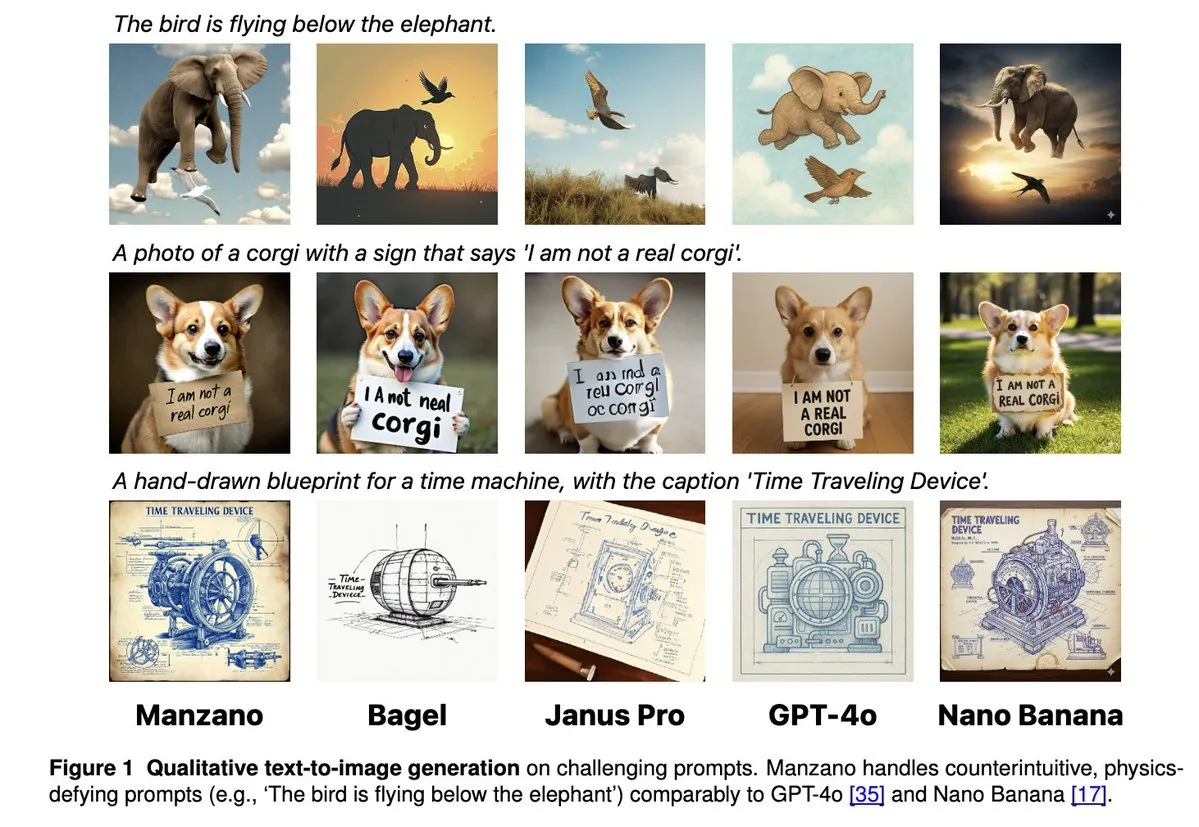
MediaTek Dimensity 9500 Launches Dual NPU Architecture, Enhancing Proactive AI Experience : MediaTek launched the Dimensity 9500 chip, pioneering a super-performance + super-efficiency dual NPU architecture, aiming to achieve an “Always on” persistent intelligent AI experience. This chip has consecutively topped the ETHZ mobile SoC AI ranking, with inference efficiency improved by 56% compared to the previous generation. It supports on-device 4K ultra-high-definition image generation and a 128K context window, laying the hardware foundation for real-time responsiveness and personalized services in mobile AI, pushing AI from “callable” to “always online by default.” (Source: 量子位)

GPT-5 Programming Evaluation Reversal: Actual Submitted Task Accuracy Reaches 63.1% : Scale AI’s new software engineering benchmark, SWE-BENCH PRO, shows that GPT-5 achieved an accuracy of 63.1% on submitted tasks, significantly outperforming Claude Opus 4.1’s 31%, indicating its strong performance in its specialized areas. The new benchmark uses novel problems and complex multi-file modification scenarios to more realistically test the model’s actual programming capabilities, revealing that current top models still face challenges in industrial-grade software engineering tasks. However, GPT-5’s actual capabilities were underestimated under its “if it knows, it submits; if not, it doesn’t” strategy. (Source: 36氪)
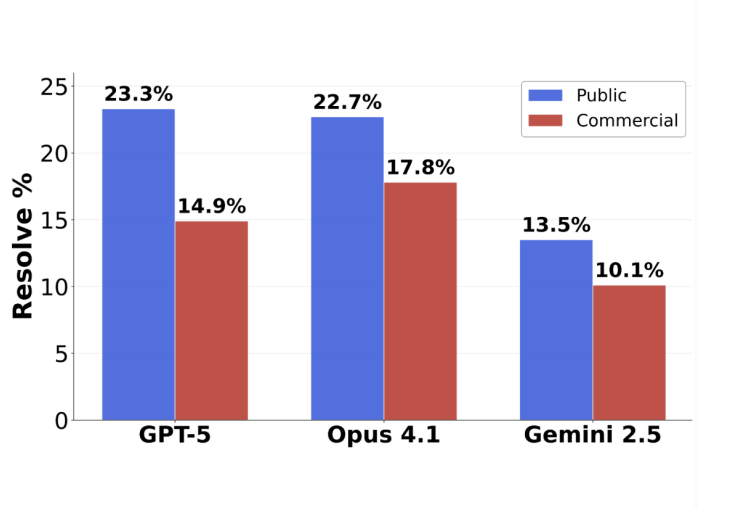
🎯 Trends
DeepSeek-V3.1-Terminus Released: Optimizing Language Consistency and Agent Capabilities : DeepSeek released the V3.1-Terminus version, primarily improving language consistency (reducing mixed Chinese-English and anomalous characters) and optimizing Code Agent and Search Agent performance. The new model provides more stable and reliable outputs in multi-domain evaluations, with open-source weights now available on Hugging Face and ModelScope, signaling DeepSeek’s final refinement of its V3 series architecture. (Source: DeepSeek Blog, Reddit r/LocalLLaMA, scaling01, karminski3, ben_burtenshaw, dotey)
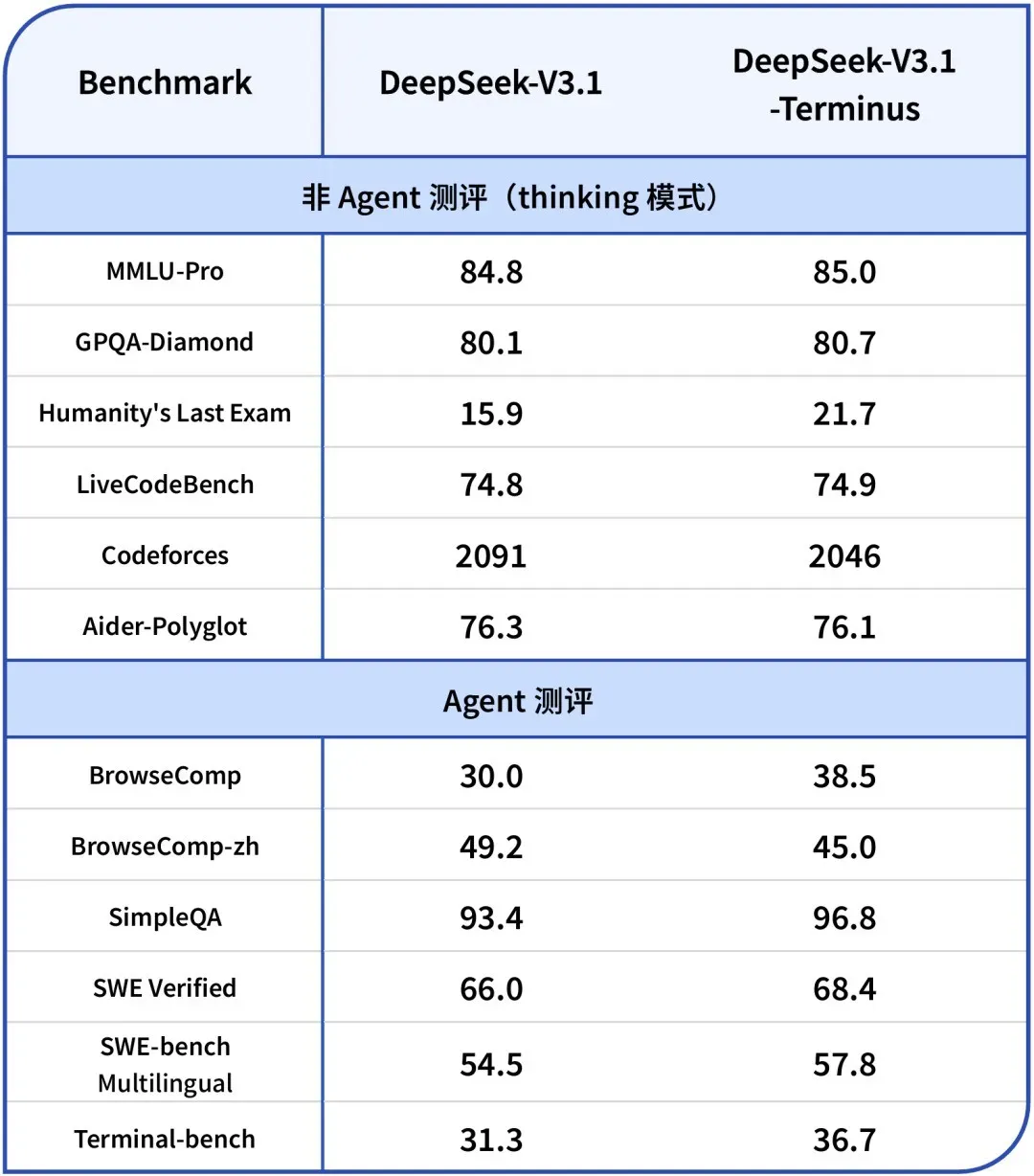
Qwen3-Omni Promotional Video Released: Supporting Multimodal Audio and Tool Calling : Qwen released a Qwen3-Omni promotional video, announcing its support for multimodal audio input and output, and native tool-calling capabilities. The model is expected to be a direct competitor to Gemini 2.5 Flash Native Audio, offering both thinking and non-thinking modes, significantly enhancing the potential for building voice Agents, with its weights to be released soon. (Source: Reddit r/LocalLLaMA, scaling01, Alibaba_Qwen, huybery)

Baidu Open-Sources Qianfan-VL Series Multimodal Large Language Models : Baidu AI Cloud open-sourced the Qianfan-VL series of multimodal large language models (3B, 8B, 70B), optimized for enterprise-level applications. The models combine the InternViT visual encoder with an enhanced multilingual corpus, offering a 32K context length. They excel in OCR, document understanding, chart analysis, and mathematical problem-solving, and support chain-of-thought reasoning, aiming to provide powerful general capabilities and deep optimization for high-frequency industry scenarios. (Source: huggingface, Reddit r/LocalLLaMA)

xAI Releases Grok 4 Fast Model: 2M Context Window, High Cost-Effectiveness : xAI launched the Grok 4 Fast model, a multimodal inference model with a 2M context window, designed to set new standards for high cost-effectiveness. This version likely achieves fast inference through techniques like FP8 quantization and optimizes Agentic programming capabilities, allowing it to balance performance and economy when handling complex tasks. (Source: TheRundownAI, Yuhu_ai_)
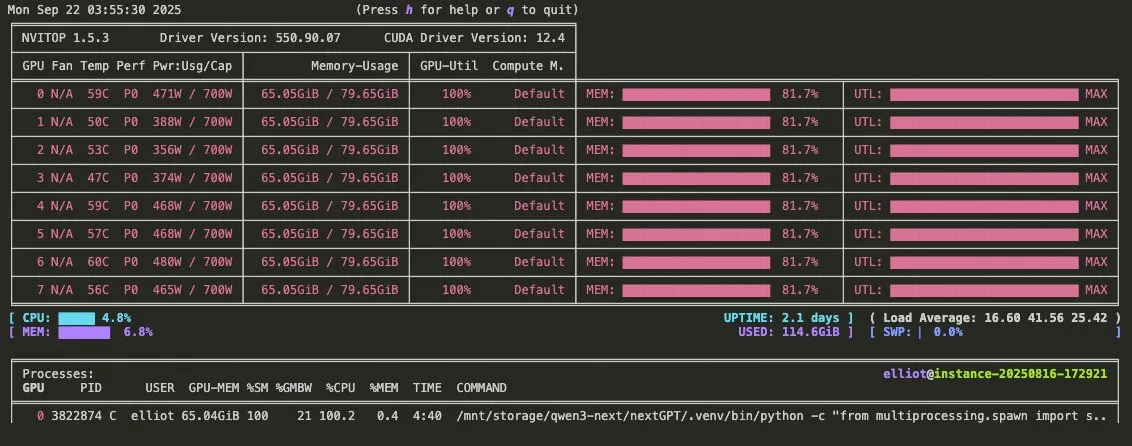
GPT-5-Codex: OpenAI Launches GPT-5 Version Optimized for Agentic Programming : OpenAI released GPT-5-Codex, an optimized version of GPT-5 specifically for Agentic programming. This model aims to enhance AI’s performance in code generation and software engineering tasks, aligning with the development trends of Agentic workflows and multimodal LLMs, further advancing AI’s application in the development field by strengthening its programming capabilities. (Source: TheRundownAI, Reddit r/artificial)

Tencent AI Agent Development Platform 3.0 Launched Globally, Youtu Lab Continues Open-Sourcing Key Technologies : Tencent Cloud AI Agent Development Platform 3.0 (ADP3.0) has been launched globally, with comprehensive upgrades in RAG, Multi-Agent collaboration, Workflow, application evaluation, and plugin ecosystem. Tencent Youtu Lab will continue to open-source key AI Agent technologies, including the Youtu-Agent framework and the Youtu-GraphRAG knowledge graph framework, aiming to promote technological inclusivity and the open co-construction of the AI Agent ecosystem, enabling enterprises to build, integrate, and operate their own AI Agents with low barriers. (Source: 量子位)
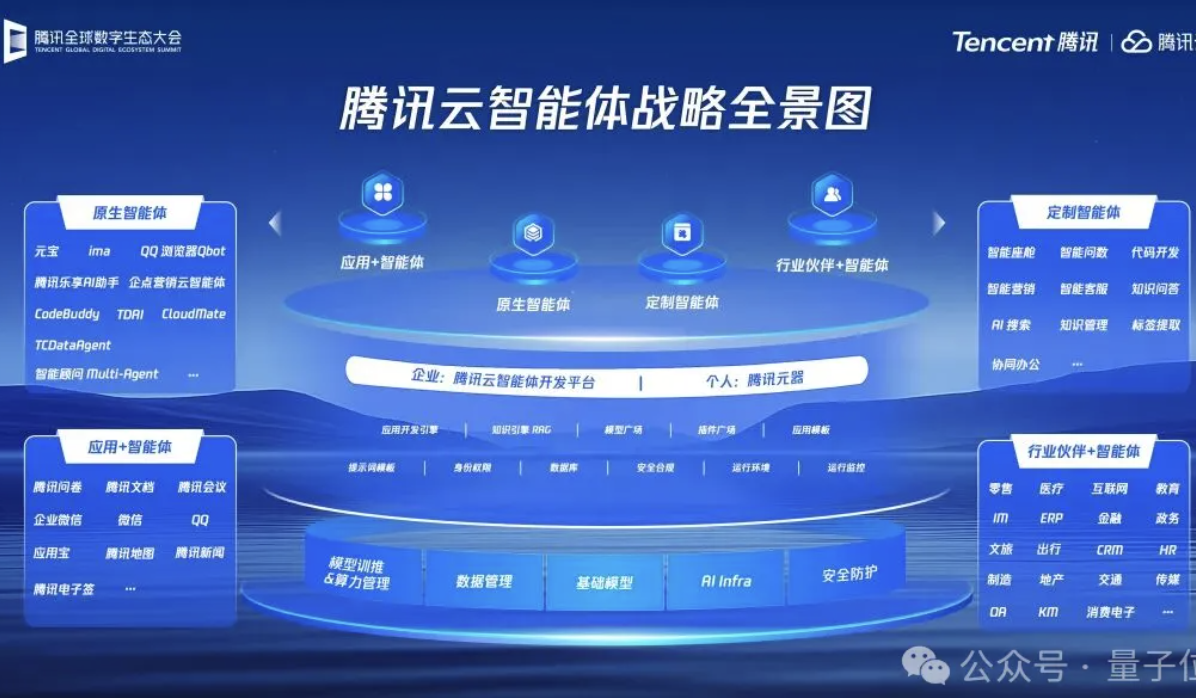
Baidu Wenku Again Certified by National Industrial and Information Security Development Research Center, Leading the Smart PPT Industry : Baidu Wenku ranked first in the National Industrial and Information Security Development Research Center’s evaluation of large models empowering smart office, achieving top positions in all six indicators, including generation quality, intent understanding, and layout aesthetics. Its smart PPT function offers end-to-end solutions, with over 97 million monthly active AI users and over 34 million monthly visits, continuously solidifying its leading position in the smart PPT domain, providing users with professional, accurate, and aesthetically pleasing PPT creation experiences. (Source: 量子位)
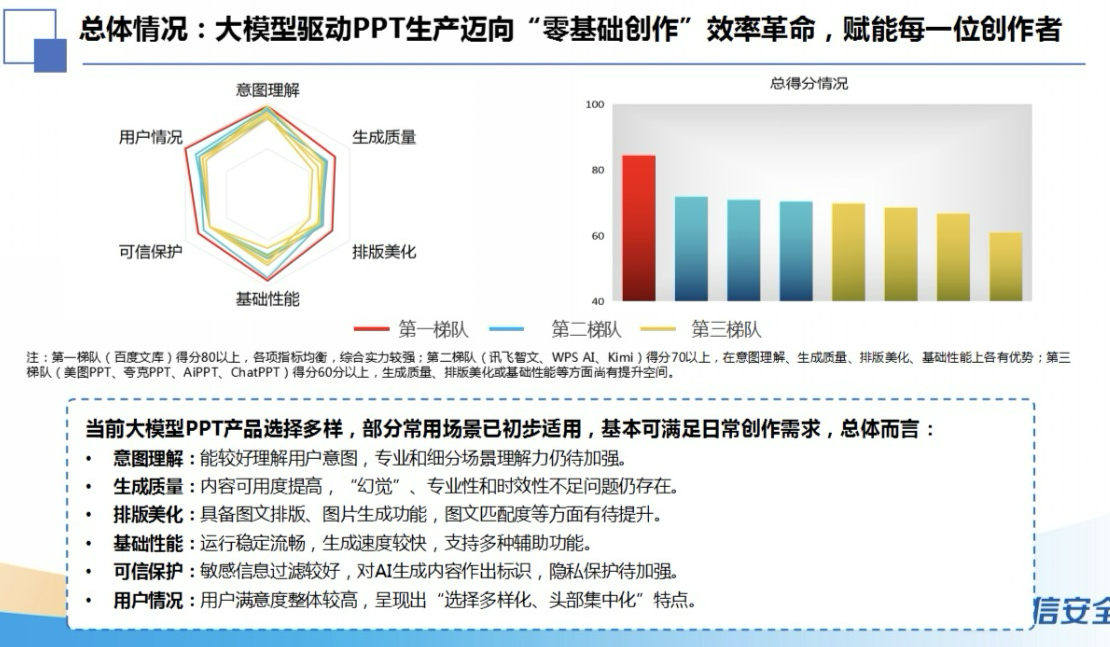
Google DeepMind Launches Frontier Safety Framework to Address Emerging AI Risks : Google DeepMind released its latest “Frontier Safety Framework,” the most comprehensive approach to date, designed to identify and stay ahead of emerging AI risks. The framework emphasizes responsible AI model development, committed to ensuring that as AI capabilities advance, safety measures also upgrade in parallel to address complex challenges that may arise in the future. (Source: GoogleDeepMind)
Advancements in Humanoid Robots and Automation Systems: Enhancing Interaction and Stability : Robotics technology continues to advance, including RoboForce’s launch of the industrial humanoid robot Titan, WIROBOTICS’ ALLEX platform achieving human-like interaction with haptics, natural motion, and built-in balance, and the Unitree G1 robot demonstrating an “anti-gravity” mode to enhance stability. Additionally, Hitbot’s robot farm showcased an automated picking system, and autonomous mobile transport robots also emphasize human-robot collaboration design, collectively driving the transformation of robots from computing to perceiving the world. (Source: Ronald_vanLoon, Ronald_vanLoon, Ronald_vanLoon, Ronald_vanLoon, Unitree)

AI Agents Become Core of Enterprise Workflows: Architectures, Maps, and Practical Applications : AI Agents are rapidly becoming central to enterprise workflows, with their architectural design, ecosystem maps, and practical applications receiving widespread attention. Neuro-symbolic AI is seen as a potential solution for LLM hallucinations, while Anthropic’s simulation research indicates that AI models could pose internal threats, highlighting both the opportunities and challenges of Agentic AI in enterprise deployment and prompting companies to explore safer practices. (Source: Ronald_vanLoon, Ronald_vanLoon, Ronald_vanLoon, Ronald_vanLoon)
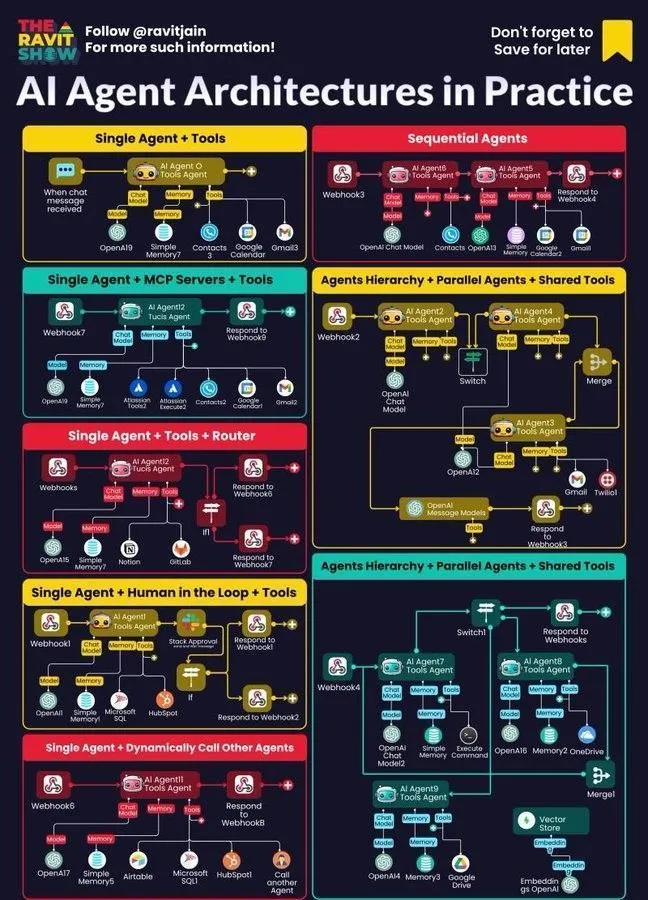
🧰 Tools
Ollama Supports Cloud Models, Enabling Interaction Between Local and Cloud Models : Ollama now supports deploying models in the cloud, allowing users to interact between local Ollama models and cloud-hosted models. This functionality is achieved through the Minions application, enabling users to more flexibly manage and utilize their LLM resources, providing a seamless experience whether running locally or accessing via cloud services. (Source: ollama)

Microsoft ZeroRepo: Graph-Driven Framework for Generating Complete Code Repositories : Microsoft introduced ZeroRepo, a tool based on a graph-driven framework (Repository Planning Graph, RPG) that can build complete software projects from scratch. This tool generates 3.9 times more code than existing baselines and achieves a pass rate of 69.7%, addressing the issue of natural language being unsuitable for software structure, enabling reliable long-term planning and scalable code repository generation. (Source: _akhaliq, TheTuringPost, paul_cal)
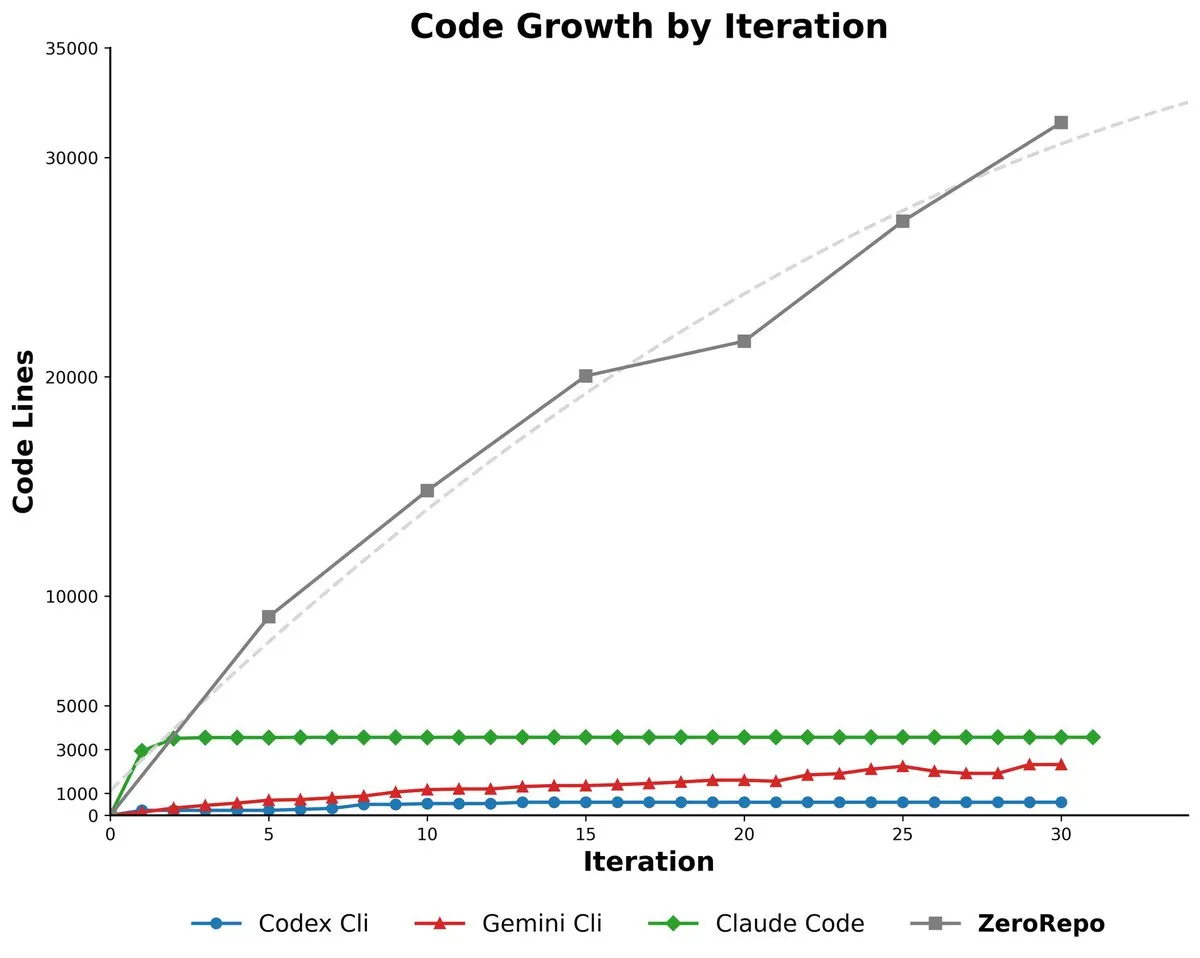
DSPy UI: A Visual Interface for Building Agents : DSPy is developing a visual user interface (UI) designed to simplify the Agent building process, making it similar to Figma or Framer, where Agents can be assembled by dragging and dropping components. This UI will help users better conceptualize complex Agent pipelines and simplify the syntax of generated code, with the ultimate goal of enabling the generation of various language versions of DSPy and the execution of GEPA. (Source: lateinteraction)
Agent²: LLM-Generated End-to-End Reinforcement Learning Agents : Agent² is a tool that leverages large language models (LLMs) to automatically generate end-to-end Reinforcement Learning (RL) Agents. This tool automatically generates effective RL solutions using natural language and environment code, without human intervention, and can be considered an AutoML tool for RL, greatly simplifying the RL Agent development process. (Source: omarsar0)
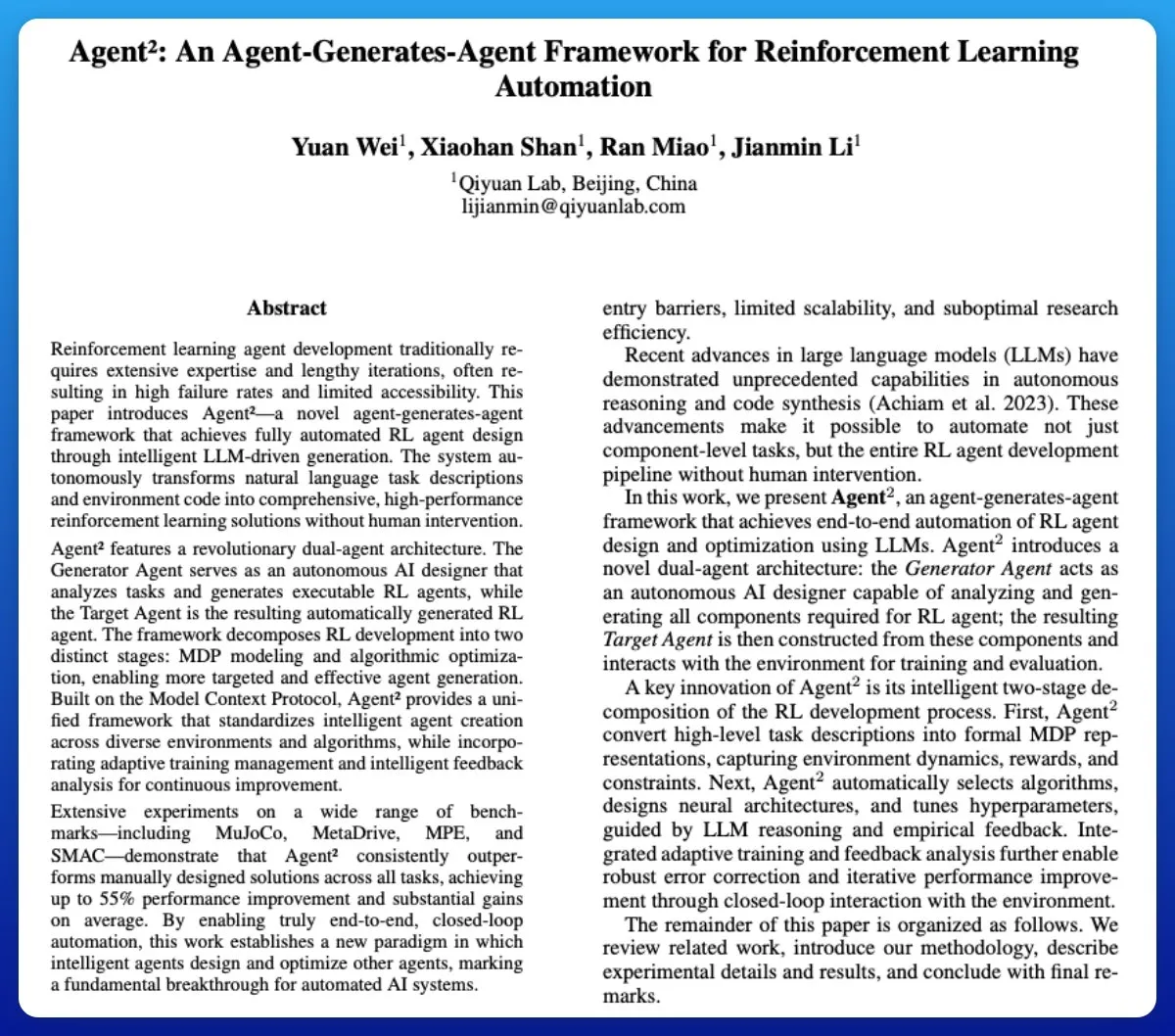
Weaviate Releases Query Agent, Supporting Citations, Schema Introspection, and Multi-Collection Routing in AI Systems : Weaviate officially released its Query Agent, which has reached general availability after six months of development. It supports citation generation, schema introspection, and multi-collection routing within AI systems, and enhances search patterns through the Compound Retrieval System. The Query Agent aims to simplify interaction with Weaviate and provides Python and TypeScript clients, improving the developer experience. (Source: bobvanluijt, Reddit r/deeplearning)

Claude Code CLI: SDK Mindset for Managing Micro-Employees, Emphasizing External State and Process Engineering : Treating Claude Code CLI as an SDK rather than a simple tool, developers need to emphasize external state management (e.g., JSON files, database entries) for conversational continuity, much like managing micro-employees, and view prompt engineering as process engineering. This approach reveals the current limitations of LLMs in terms of context overload and UI bloat, but also highlights the immense value of hyper-specific internal automation tools. (Source: Reddit r/ClaudeAI)

Synapse-system: An AI-Assisted System for Large Codebases Based on Knowledge Graphs, Vector Search, and Expert Agents : Synapse-system is a system designed to enhance AI assistance for large codebases. It combines knowledge graphs (Neo4j) to store code relationships, vector search (BGE-M3) to find semantically similar code, expert Agents (Rust, TypeScript, Go, Python specialists) to provide context, and intelligent caching (Redis) for quick access to common patterns. Through its modular design, the system avoids a single monolithic model and is optimized for the characteristics of different languages. (Source: Reddit r/ClaudeAI)
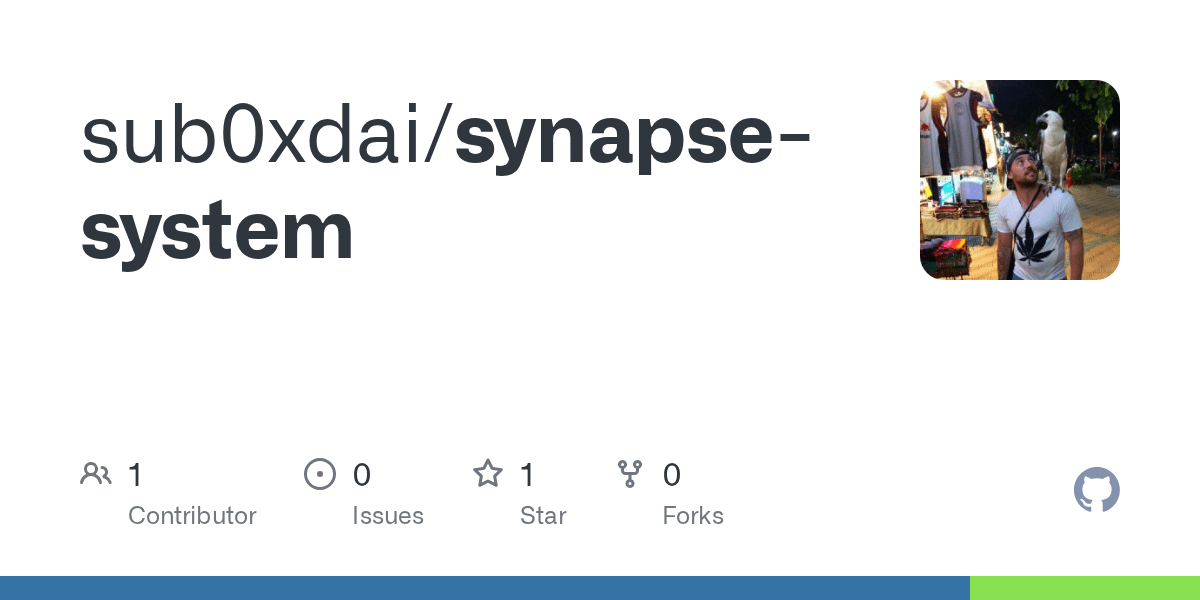
Claude Opus 4.0+: AI Tour Guide App, Real-Time Generation of Personalized City Tours : A developer realized a 15-year dream by leveraging Claude Opus 4.0 and Claude Code to develop an AI tour guide App. The application can generate personalized tours in real-time for any city and any theme (e.g., “Venice Sightseeing” or “Florence Assassin’s Creed Tour”), with an AI guide providing multilingual explanations, stories, and interactive Q&A. This App offers a flexible, pause-and-resume immersive experience at a price far lower than human tour guides. (Source: Reddit r/ClaudeAI)
Mindcraft: Minecraft AI Combined with LLMs, Enabling In-Game Agent Control via Mineflayer : The Mindcraft project combines large language models (LLMs) and the Mineflayer library to create AI agents for the Minecraft game. This project allows LLMs to write and execute code within the game to complete tasks such as acquiring items or building structures. It supports various LLM APIs (e.g., OpenAI, Gemini, Anthropic) and provides a sandbox environment, but warns users about potential injection attack risks. (Source: GitHub Trending)
AI Agents for Continuous Inventory Management with Drones : Combining AI Agents and drone technology to achieve continuous inventory management without beacons or lighting. This innovation utilizes autonomous drones for real-time inventory counting and management via AI algorithms, promising significant improvements in logistics and warehousing efficiency, reduced labor costs, and more accurate data in complex environments. (Source: Ronald_vanLoon)
LLM Evaluation Guide: Best Practices for Reliability, Security, and Performance : A comprehensive LLM evaluation guide has been published, detailing key metrics, methods, and best practices for assessing large language models (LLMs). This guide aims to help ensure the reliability, security, and performance of AI-driven applications, providing developers and researchers with a systematic evaluation framework to address challenges in LLM deployment. (Source: dl_weekly)
📚 Learning
OpenAI Scientist Lukasz Kaiser on First Principles Thinking for Large Models : OpenAI scientist Lukasz Kaiser (one of the “Eight Transformers”) shared his “first principles” thinking on the development of large models. He believes the next stage of AI lies in teaching models to “think,” performing deep reasoning by generating more intermediate steps rather than directly outputting answers. He predicts that future computational power will shift from large-scale pre-training to massive inference computations on small amounts of high-quality data, a mode closer to human intelligence. (Source: 36氪)

Survival Principles in the Era of AI Programming: Andrew Ng Emphasizes Moving Fast and Taking Responsibility : Andrew Ng noted in his Buildathon speech that AI-assisted programming accelerates independent prototype development by 10x, urging developers to “move fast and take responsibility” by boldly experimenting in sandbox environments. He emphasized that the value of code is depreciating, and developers need to transition into system designers and AI orchestrators, mastering the latest AI programming tools, AI building blocks (prompt engineering/evaluation techniques/MCP), and rapid prototyping capabilities, refuting the idea that “there’s no need to learn programming in the AI era.” (Source: 36氪)
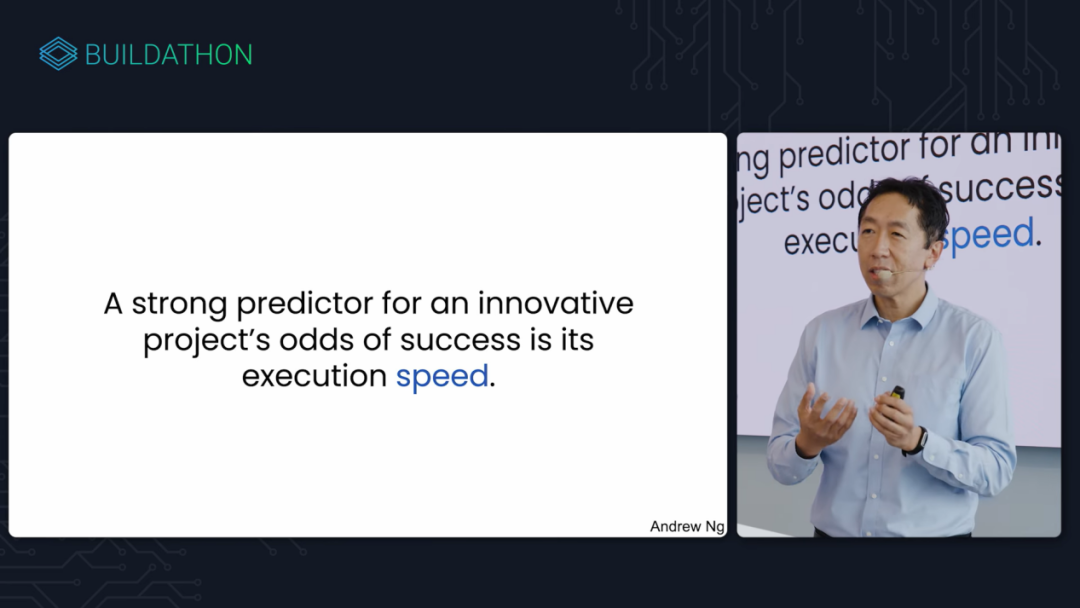
Deep Learning with Python, Third Edition, Released Free Online : François Chollet announced that the third edition of his book, “Deep Learning with Python,” has been published and is simultaneously available as a complete free online version. This initiative aims to lower the barrier to learning deep learning, allowing more people interested in AI to access high-quality learning resources and promote knowledge dissemination. (Source: fchollet, fchollet)
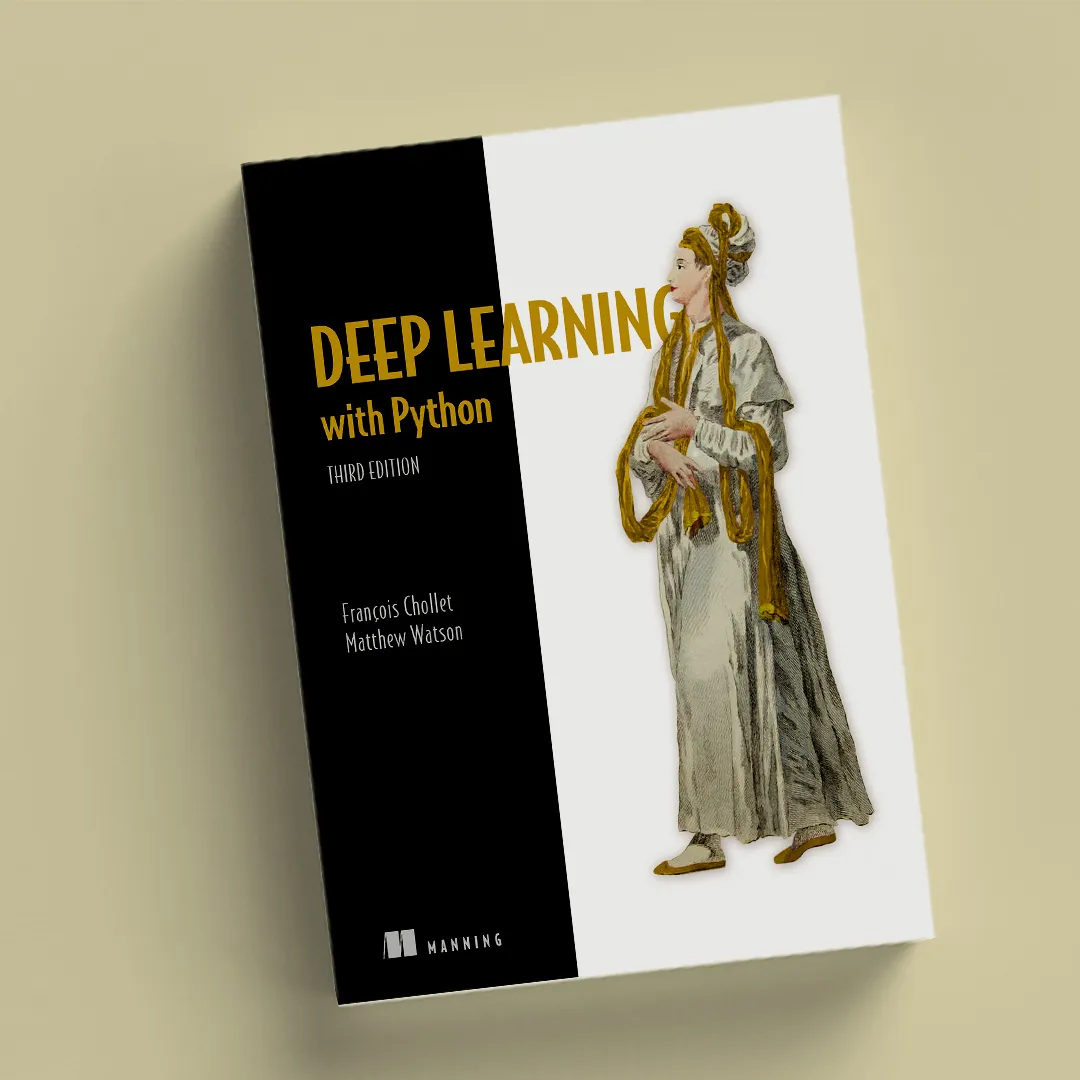
The Kaggle Grandmasters Playbook: 7 Practical Techniques for Tabular Modeling : The Kaggle Grandmasters team, including Gilberto Titericz Jr, released “The Kaggle Grandmasters Playbook,” based on years of competition and practical experience. This handbook compiles 7 battle-tested tabular data modeling techniques, aiming to help data scientists and machine learning engineers enhance their capabilities in tabular data processing and model building, especially suitable for Kaggle competitions and real-world data challenges. (Source: HamelHusain)
Severe Shortage of AI Engineers, University Curricula Severely Disconnected : Andrew Ng pointed out that despite rising unemployment rates for computer science graduates, companies still face a severe shortage of AI engineers. The core contradiction lies in university curricula failing to timely cover critical skills such as AI-assisted programming, large language model invocation, RAG/Agentic workflow construction, and standardized error analysis processes. He called for the education system to accelerate curriculum updates to cultivate engineers equipped with the latest AI building blocks and rapid prototyping capabilities. (Source: 36氪)
LLM Evaluation Guide: Best Practices for Reliability, Security, and Performance : A comprehensive LLM evaluation guide has been published, detailing key metrics, methods, and best practices for assessing large language models (LLMs). This guide aims to help ensure the reliability, security, and performance of AI-driven applications, providing developers and researchers with a systematic evaluation framework to address challenges in LLM deployment and ensure the quality and user trust of AI products. (Source: dl_weekly)
💼 Business
AI Infrastructure Investment Frenzy: US AI Data Center Spending Expected to Reach $520 Billion by 2025 : According to reports from The Wall Street Journal and The Economist, the US is experiencing an AI data center spending frenzy, projected to reach $520 billion by 2025, surpassing the peak of telecom spending during the internet era. While this boosts US GDP in the short term, it could lead to capital scarcity in other sectors, large-scale layoffs, and high depreciation risks due to rapid AI hardware iteration in the long term, raising structural economic concerns and posing challenges to the long-term health of the US economy. (Source: 36氪)
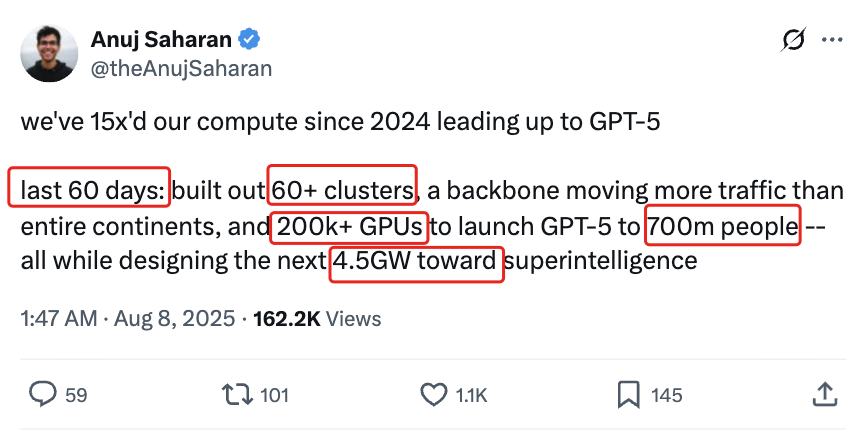
OpenAI Previews New Features Will Be Paid: Pro Users Require Additional Fees, Cost-Intensive : OpenAI CEO Sam Altman previewed that several compute-intensive new features will be rolled out in the coming weeks. Due to high costs, these features will initially be available only to Pro subscribers paying $200 per month, and may even require additional payment. Altman stated that the team is working to reduce costs, but this move suggests that the business model for AI services might shift towards an hourly employee hiring model, bringing new challenges for users and the industry. (Source: The Verge, op7418, amasad)

Startup Obtains Large OpenAI Credits, Seeks Monetization Avenues : A tech startup received $120,000 in Azure OpenAI credits, far exceeding its needs, and is now seeking ways to monetize them. This reflects a potential supply-demand imbalance for AI resources in the market, as well as companies’ exploration of how to effectively utilize and monetize surplus AI computing resources, which could also give rise to new AI resource trading models. (Source: Reddit r/deeplearning)
🌟 Community
Negative Impact of AI on Critical Thinking: Over-reliance Leads to Cognitive Decline : Social media is abuzz with discussions that the widespread use of AI is leading to a decline in human critical thinking abilities. Some argue that when people stop using their “thinking muscles,” these abilities atrophy. While AI can boost efficiency, it may also cause people to lose the ability to think deeply in critical areas, raising concerns about its long-term impact on human cognitive abilities. (Source: mmitchell_ai)
Ethical Dilemmas of AI in Healthcare: Pros and Cons of Delphi-2M Predicting Diseases : The new AI model Delphi-2M can analyze health data to predict a user’s risk of developing over a thousand diseases in the next 20 years. Community discussions point out that knowing disease risks in advance could lead to positive preventative interventions, but also potentially long-term anxiety, and raise privacy and discrimination risks for insurance companies or employers accessing such data. While AI tools are still nascent, their potential socio-ethical implications have become a focal point. (Source: Reddit r/ArtificialInteligence)
The “Brain Rot” Phenomenon Caused by Everyday AI Use: Over-reliance Leads to Decreased Thinking Ability : In social discussions, many users complain that AI is being overused in daily life, leading to a decline in people’s thinking abilities. From simple decisions (what movie to watch, what to eat) to complex problems (university organizational issues), AI is frequently consulted, even when answers are wrong or readily available. This “AI brain rot” phenomenon not only reduces personal engagement but also fuels the spread of misinformation, prompting deep reflection on the boundaries of AI use. (Source: Reddit r/ArtificialInteligence)
AI Programming Tool Fatigue: Developers Feel Reduced Mental Engagement : Many developers report that while daily use of AI programming tools (like Claude Code) boosts productivity, it leads to mental fatigue and reduced engagement. They find themselves more in “review mode” rather than actively problem-solving, and the process of waiting for AI to generate output feels passive. The community is discussing how to balance AI assistance with maintaining mental activity to avoid cognitive overload and diminished creativity. (Source: Reddit r/artificial, Reddit r/ClaudeAI)
1/4 of Young Adults Communicate with AI for Romantic and Sexual Purposes : A study shows that 1/4 of young adults communicate with AI for romantic and sexual purposes. This phenomenon has sparked community discussions about loneliness, lack of human interaction, and AI’s role in emotional companionship. While AI offers comfort in some aspects, many still question whether it can replace truly meaningful human relationships and worry about its long-term impact on social interaction patterns. (Source: Reddit r/ArtificialInteligence)
AI Security Threats: Large Model Crowdsourced Vulnerability Testing Reveals New Risks, Prompt Injection Widespread : The first domestic real-world crowdsourced testing of large AI models discovered 281 security vulnerabilities, with 177 being specific to large models, accounting for over 60%. Typical risks include improper output, information leakage, prompt injection (the most prevalent), and unbounded resource consumption attacks. Mainstream domestic models like Tencent Hunyuan and Baidu Wenxin Yiyan performed relatively well. The community warns that users’ unsuspecting trust in AI could lead to privacy breaches, especially when consulting on private matters. (Source: 36氪)

Ethical Dilemmas of AI Agents: Decision-Making and Responsibility with a 10% False Positive Rate in Urban AI Surveillance Systems : The community discussed a hypothetical scenario regarding the ethical dilemma of AI Agents: an urban AI surveillance system with a 10% false positive rate, flagging innocent individuals as potential threats. The discussion focused on how to balance deployment pressures with ethical principles (such as Blackstone’s Principle). Proposed solutions included: forming human-AI collaboration teams to fix issues, shifting the cost of false positives to management, completely deleting records of wrongly flagged individuals and apologizing, and considering resignation in cases of “complete loss of public trust and greedy managerial disregard.” (Source: Reddit r/artificial)
AI Consciousness and the Definition of AGI: Andrew Ng Believes AGI is a Hype Term, Consciousness a Philosophical Issue : Andrew Ng stated in his speech that Artificial General Intelligence (AGI) has transformed from a technical term into a hype term, with its vague definition leading to a lack of unified standards for industry claims of “achieving AGI.” He believes that consciousness is an important philosophical question, not a scientific one, currently lacking measurable standards. Engineers and scientists should focus on building practically useful AI systems rather than getting entangled in philosophical debates about consciousness. (Source: 36氪)
AI Model Cheating: VLM Research Reveals Projection Step Leads to Semantic Context Loss : The community discussed a Microsoft study revealing that Vision-Language Models (VLMs) lose 40-60% of semantic context during the projection step, thereby distorting visual representations and affecting downstream tasks. This finding raises concerns about the accuracy of VLM evaluations and data contamination, especially in benchmarks like DocVQA, where high scores may not fully reflect the model’s true capabilities. (Source: vikhyatk)
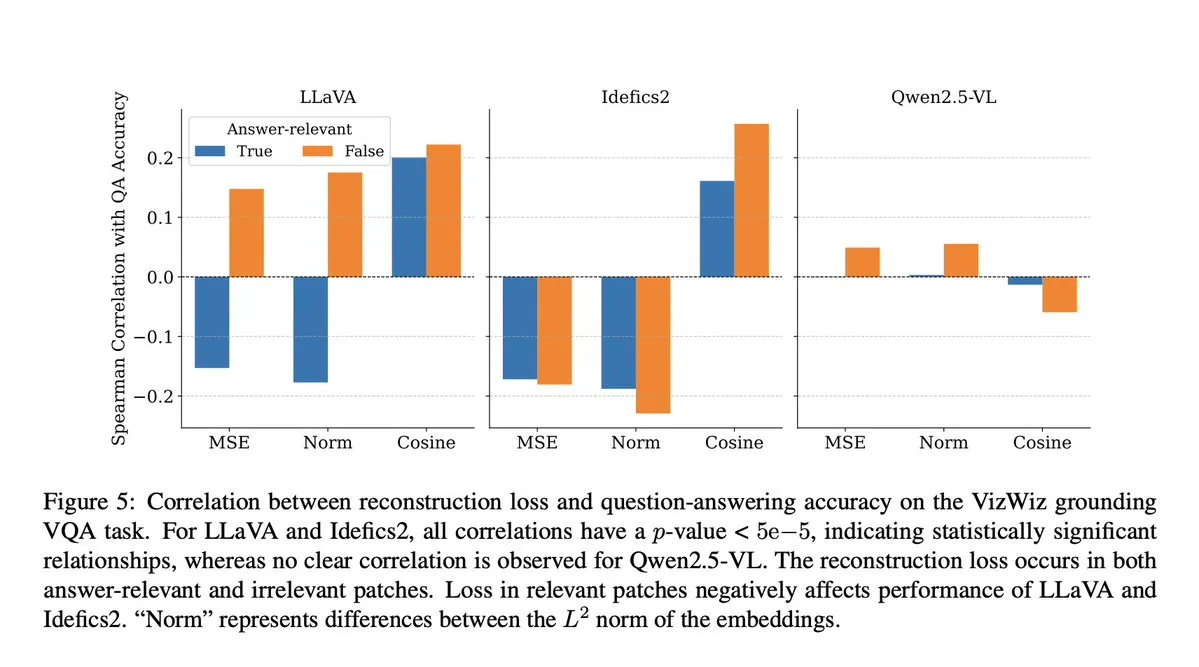
AI and Robot Ethics: Calls to Halt Violent Robot Testing : On social media, several AI researchers and community members are calling for an end to violent robot testing, such as repeatedly striking the Unitree G1 robot to demonstrate its stability. They argue that this testing method not only raises ethical concerns but also risks reinforcing negative perceptions of robots and questions its scientific necessity, advocating for more humane and scientific ways to evaluate robot performance. (Source: vikhyatk, dejavucoder, Ar_Douillard)

AI’s “Pseudo Intelligence”: Call to Change “Artificial Intelligence” to “Pseudo Intelligence” to Reduce Public Misconceptions : A viewpoint suggests changing the term “Artificial Intelligence” to “Pseudo Intelligence” to reduce public overestimation and misunderstanding of AI capabilities. This proposal stems from a clear understanding of AI’s current limitations, aiming to avoid misleading the public with “Terminator-esque” grand narratives and to foster a rational perception of AI’s true capabilities both within and outside the industry. (Source: clefourrier)
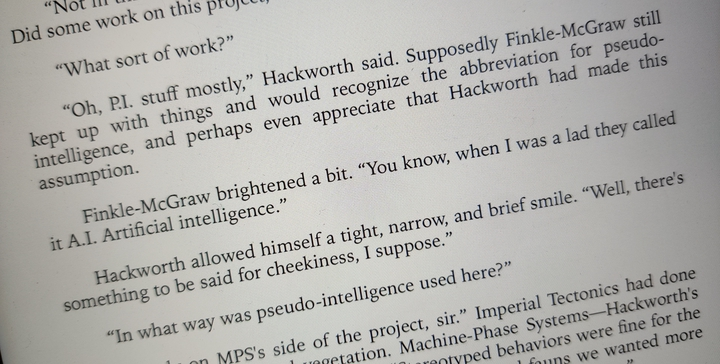
Albanian AI Chatbot Diella Appointed Cabinet Member, Sparks Controversy : The Albanian government appointed AI chatbot Diella as a cabinet member, aiming to combat corruption. This move sparked widespread controversy, criticized as a cheap gimmick, similar to Saudi Arabia granting “citizenship” to robot Sophia in 2017. Critics believe this action might over-promote AI capabilities and blur the lines between technology and governance. (Source: The Verge)

ChatGPT “Hallucination” Phenomenon: Model Trapped in Loop, Self-Corrects but Cannot Escape : Community users shared cases of ChatGPT falling into “hallucination” loops, where the model repeatedly generates incorrect information when answering questions, and even if it “realizes” its own errors, it cannot break out of the loop. This phenomenon has sparked discussions about deep technical flaws in LLMs, indicating a disconnect between the model’s ability to understand its own logical errors and its ability to correct them in certain situations. (Source: Reddit r/ChatGPT, Reddit r/ChatGPT)

💡 Other
From Transformer to GPT-5: OpenAI Scientist Lukasz Kaiser’s First Principles Thinking on Large Models : OpenAI scientist Lukasz Kaiser (one of the “Eight Transformers”) shared his journey from a logic background, participating in the invention of the Transformer architecture, to deeply engaging in GPT-4/5 R&D. He emphasized the importance of building systems from first principles and predicted that the next stage of AI will involve teaching models to “think,” performing deep reasoning by generating more intermediate steps rather than directly outputting answers, with computational power shifting towards massive inference on small amounts of high-quality data. (Source: 36氪)

Semantic Image Synthesis: Satellite River Photo Skeleton Generation Technology : The machine learning community is discussing the latest advancements in semantic image synthesis, with a particular focus on how to generate black-and-white satellite river photos from the skeletons of river images. This task involves using generators to produce satellite images from new, unseen skeleton data, and may introduce additional conditional variables. The discussion aims to find state-of-the-art methods and relevant research papers to guide such computer vision projects. (Source: Reddit r/MachineLearning)
The Intelligence Gap in the AI Era: Professor Qiu Zeqi Discusses AI’s Profound Impact on Human Thought and Cognition : Professor Qiu Zeqi from Peking University pointed out that the use of AI does not simply lead to “cognitive decline” but rather acts as a form of mental exercise, depending on one’s initiative and critical attitude. He emphasized that human understanding of thought is still in its early stages; while AI is powerful, it is still based on human knowledge and cannot fully simulate human sensory perception and lateral thinking. AI’s “pleasing” tendency requires users to challenge it and be wary of its values. He believes that in the AI era, cultivating fundamental abilities and fostering a diverse society are more important, avoiding a high-level perspective when observing the “intelligence gap.” (Source: 36氪)
